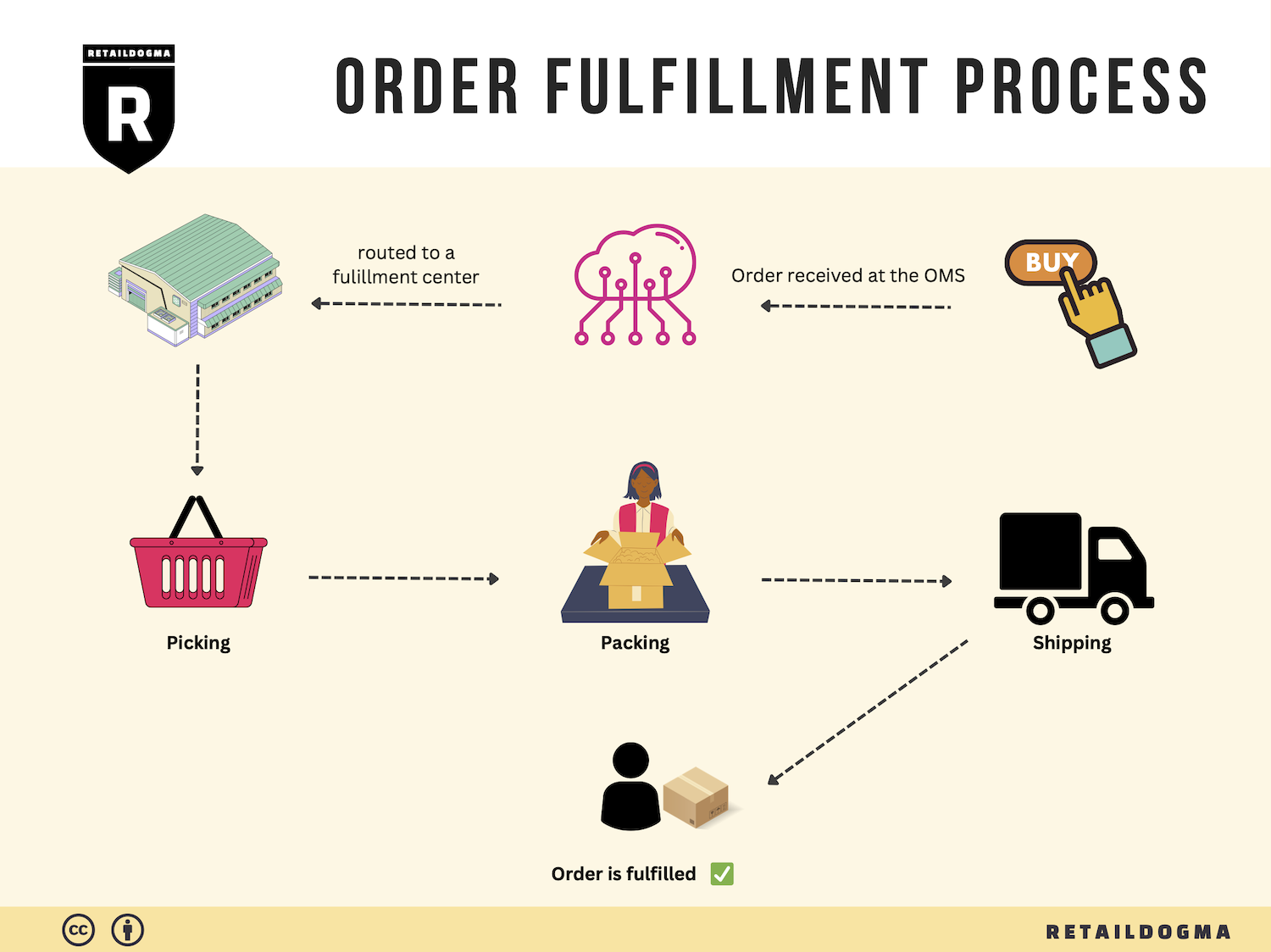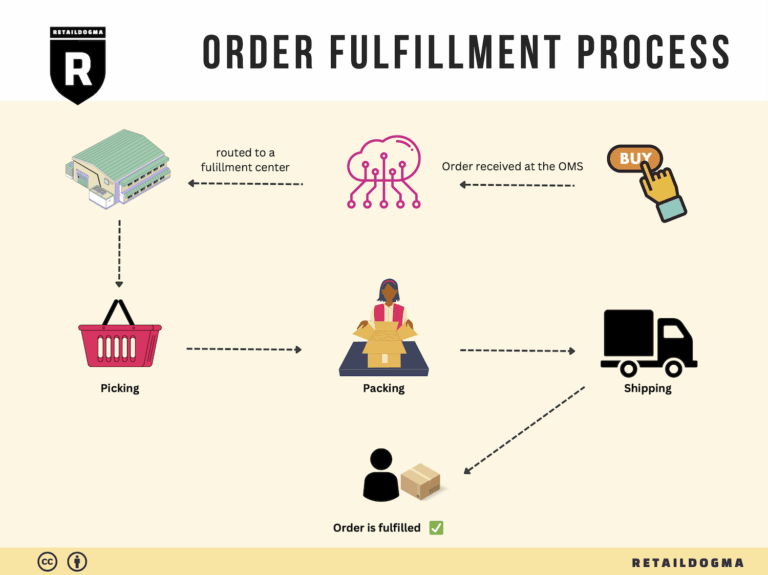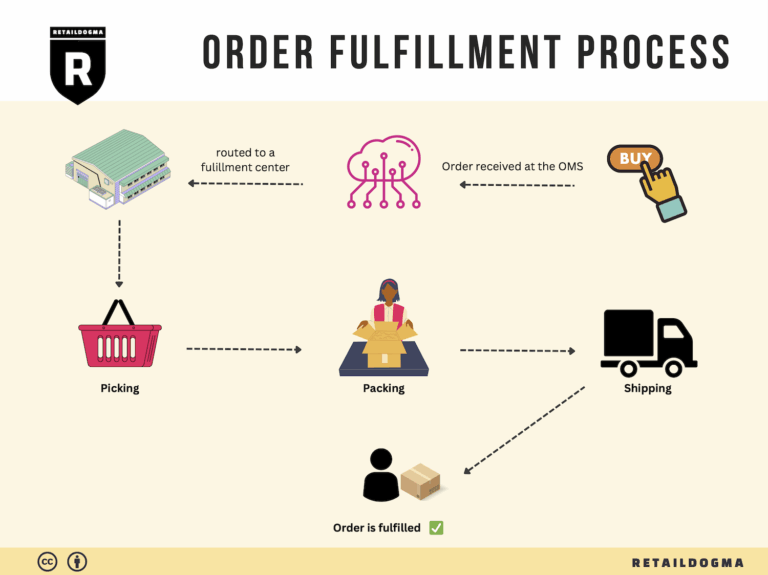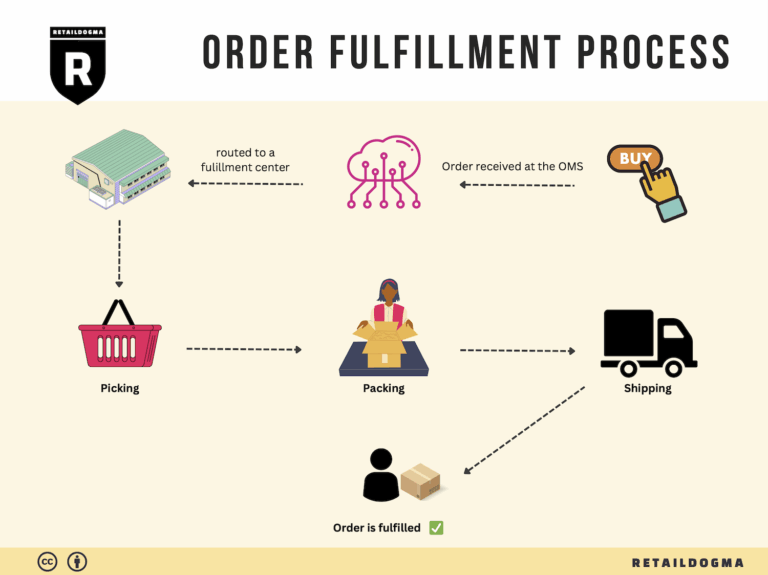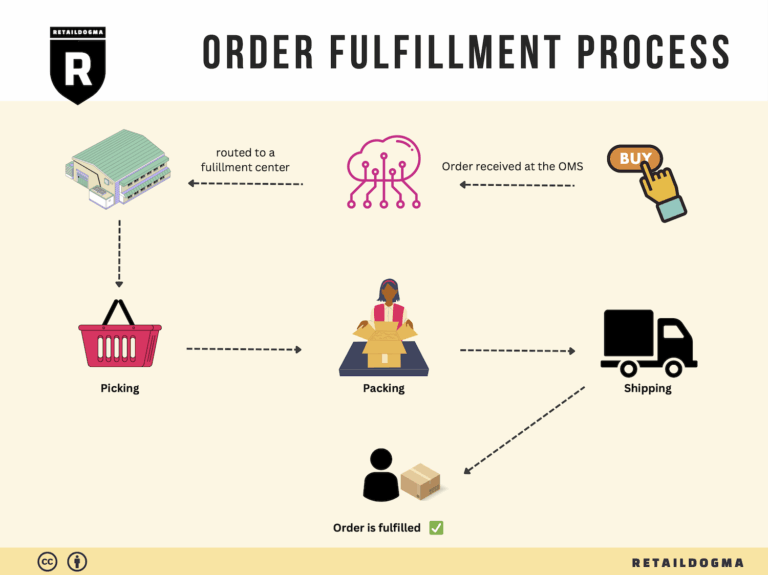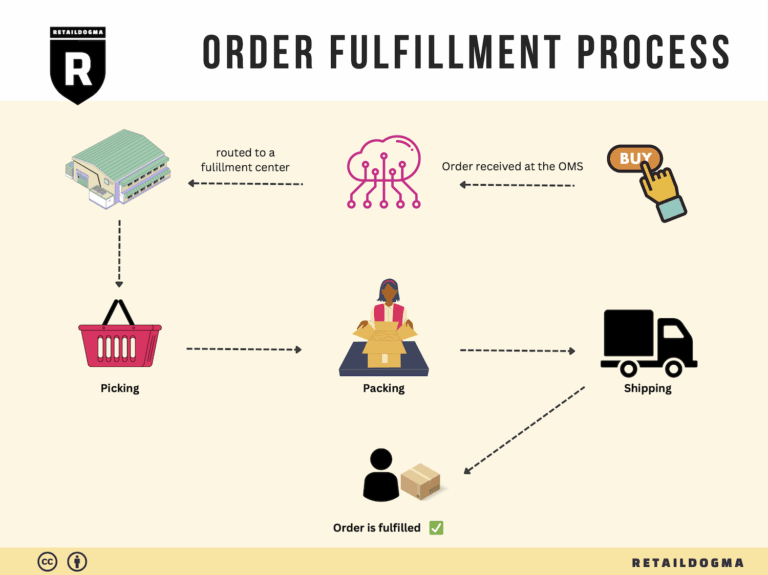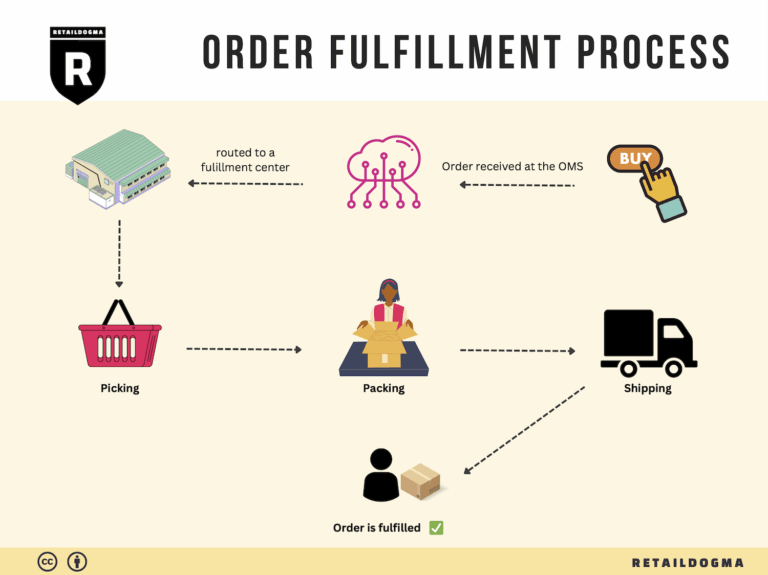Ecommerce Fulfillment Services: The Ultimate Guide (2025)
What is E-commerce Fulfillment? An Introduction for Growing Businesses
Navigating the Challenges of E-commerce Fulfillment
As your online business begins to flourish, the excitement of increased sales can often be overshadowed by the daunting reality of order fulfillment. Many e-commerce entrepreneurs find themselves overwhelmed with the complexities of packing and shipping orders, leading to potential delays and customer dissatisfaction. This is a common pain point that can stifle growth if not effectively managed.
At its core, e-commerce fulfillment refers to the entire process of getting a product from your warehouse or storage space to the customer’s doorstep. This process encompasses inventory management, order processing, picking and packing, shipping, and handling returns. For growing businesses, mastering this process is essential for maintaining customer satisfaction and fostering brand loyalty.
This guide is designed to demystify e-commerce fulfillment by exploring the various models available to businesses today. We will delve into options like Third-Party Logistics (3PL) and Fulfillment by Amazon (FBA), outlining the benefits and drawbacks of each. Understanding these models is crucial for selecting the right strategy that aligns with your business goals.
Additionally, we will cover the core services typically involved in e-commerce fulfillment, including inventory storage, order management systems, and shipping solutions. Knowing what services are available will enable you to tailor your fulfillment strategy to meet your specific needs.
Choosing the right fulfillment partner can significantly impact your operational efficiency and customer experience. We will provide insights into key considerations when evaluating potential partners, such as their technology capabilities, scalability, and customer service track record.
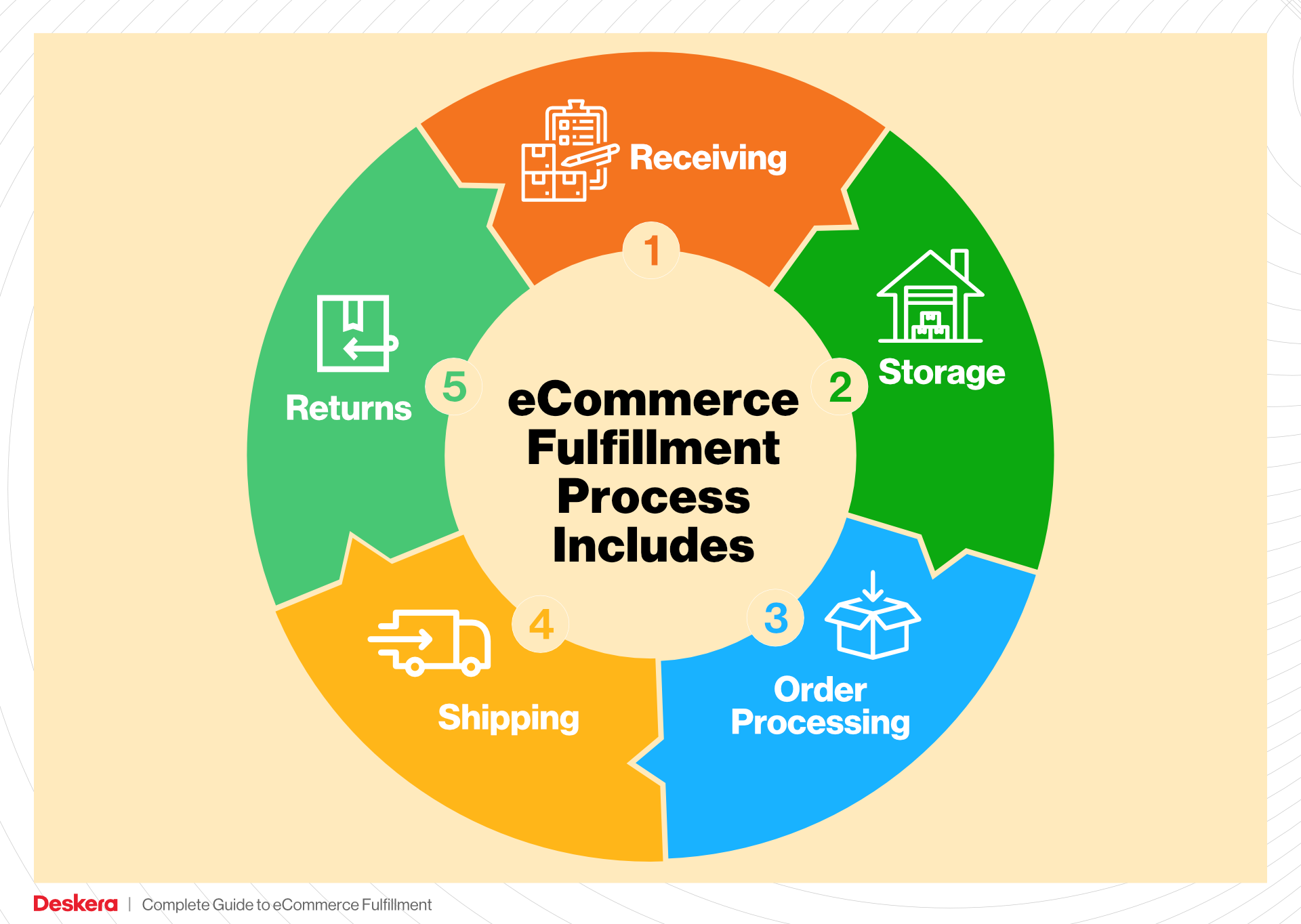
Pricing is another critical aspect of fulfillment that can vary widely based on the model and services you choose. This guide will break down the various pricing structures you might encounter, helping you make informed decisions that won’t compromise your bottom line.
Ultimately, our goal is to empower your business with the knowledge and tools necessary to make smart, strategic decisions about your logistics. By optimizing your fulfillment process, you can focus on what you do best—growing your business and delighting your customers.
What You’ll Learn In This Guide
- What is E-commerce Fulfillment? An Introduction for Growing Businesses
- The Order Fulfillment Process: From ‘Buy’ Button to Customer’s Door
- Comparing Fulfillment Models: In-House vs. 3PL vs. Dropshipping
- A Deep Dive into Amazon FBA: Pros, Cons, and Who It’s For
- Core Services Offered by Fulfillment Centers
- How to Choose a Fulfillment Partner: A 6-Point Checklist
- Understanding Fulfillment Pricing: A Breakdown of Common Fees
- Frequently Asked Questions (FAQs) about Fulfillment
- Conclusion: Is Outsourcing Fulfillment the Right Move for Your Business?
- Important Disclaimer
The Order Fulfillment Process: From ‘Buy’ Button to Customer’s Door
1. Receiving Inventory
The order fulfillment process begins with receiving inventory, a critical step that ensures the right products are available for customer orders. When shipments arrive at your warehouse, they must be carefully checked against purchase orders to confirm that the correct quantities and items have been received. This process typically involves scanning each item using a SKU (Stock Keeping Unit) system, which helps track inventory levels and manage stock accurately.
It’s essential to maintain a well-documented receiving process to prevent discrepancies that could lead to stockouts or overstock situations. Efficient receiving not only streamlines inventory management but also sets the stage for the entire fulfillment operation. By confirming that inventory is accurate and up-to-date, you can better forecast demand and improve your overall service levels.
2. Warehouse Storage
Once inventory is received, the next step is warehouse storage. This involves organizing products in a manner that maximizes space efficiency and accessibility. Items should be stored based on their SKU numbers, size, weight, and turnover rates, often utilizing a bin location system to designate specific storage areas for different products.
Effective warehouse storage is crucial for speeding up the order picking process. By strategically placing fast-moving items closer to the packing area and using vertical space, you can reduce the time and effort required to fulfill orders. Additionally, a well-organized warehouse minimizes the risk of damage and loss, ensuring that products remain in optimal condition until they are shipped.
3. Order Picking
The third step is order picking, where warehouse staff retrieve the items specified in customer orders. This process can be conducted using various methods, such as pick lists or automated picking systems, depending on the scale and complexity of the operation. A pick list outlines the items and quantities needed for each order, serving as a guide for warehouse employees.
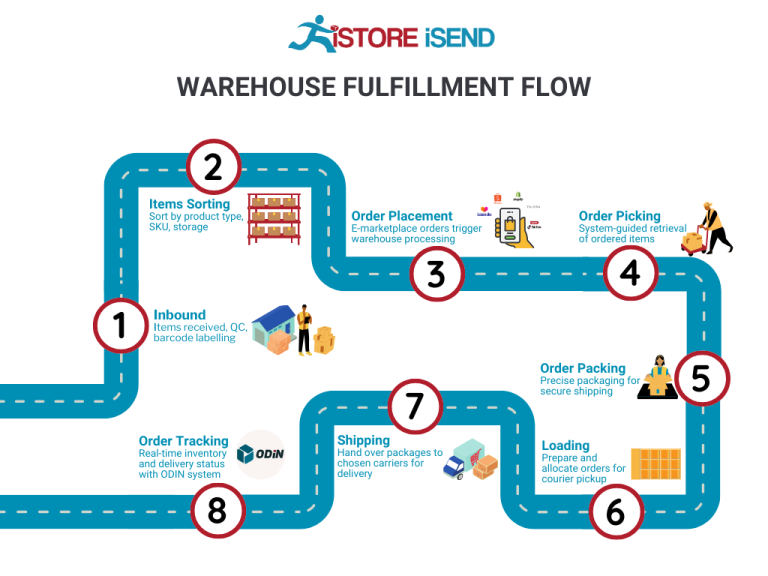
Order picking is a crucial stage in the fulfillment process because it directly impacts order accuracy and speed. Efficient picking reduces the time it takes to fulfill an order, which in turn enhances customer satisfaction. Implementing technologies such as barcode scanners or mobile devices can significantly improve picking efficiency, allowing staff to quickly locate and gather items with minimal errors.
4. Order Packing
After items have been picked, they move on to the order packing stage. This step involves securely packaging the products to protect them during transit. Proper packing includes selecting appropriate box sizes, using cushioning materials, and labeling packages clearly with shipping information and barcodes.
The importance of effective order packing cannot be overstated. Well-packed items are less likely to be damaged during shipping, reducing the likelihood of returns and increasing customer satisfaction. Additionally, efficient packing processes can help minimize shipping costs by optimizing box sizes and weights, which is critical for maintaining profitability in e-commerce operations. Utilizing packing slips that detail the contents of each package can also enhance transparency and customer trust.
5. Shipping & Delivery
The final step in the order fulfillment process is shipping and delivery. Once packages are packed, they must be labeled and handed over to carriers for transportation to customers. This step involves choosing the right shipping method based on factors such as delivery speed, cost, and destination. Integrating shipping software can help streamline this process by providing real-time tracking and automated label generation.
Shipping and delivery are pivotal in shaping the customer experience. Fast and reliable delivery can significantly enhance customer satisfaction and encourage repeat purchases. It’s essential to communicate shipping options and estimated delivery times clearly to customers at the point of sale. By doing so, businesses can manage customer expectations and reduce inquiries related to order status.
In conclusion, understanding and optimizing each step of the order fulfillment process—from receiving inventory to shipping and delivery—can lead to improved operational efficiency, reduced costs, and enhanced customer satisfaction. By focusing on these critical stages and leveraging technology, e-commerce businesses can scale effectively and meet the demands of today’s consumers.
Comparing Fulfillment Models: In-House vs. 3PL vs. Dropshipping
Comparison of Fulfillment Models
| Model | Who Handles Inventory | Best For (Business Stage) | Key Advantage | Key Disadvantage |
|---|---|---|---|---|
| In-House Fulfillment | The business itself | Established businesses with stable demand | Complete control over inventory and fulfillment processes | High operational costs and overhead |
| Third-Party Logistics (3PL) | External logistics provider | Growing businesses seeking scalability | Cost-effective and flexible logistics solutions | Less control over fulfillment and potential communication issues |
| Dropshipping | Supplier or manufacturer | Startups and small businesses | Low startup costs and minimal risk | Lower profit margins and reliance on supplier reliability |
In-House Fulfillment
In-house fulfillment refers to the process where a business manages its own inventory and fulfillment operations. This model is typically best suited for established businesses that have a stable demand for their products. Companies that opt for in-house fulfillment have complete control over their inventory, allowing them to manage stock levels, order processing, and shipping directly. This can lead to a higher level of customer service and faster turnaround times since the business can make decisions without intermediary delays. However, this model comes with significant disadvantages, including high operational costs related to warehousing, staffing, and logistics. Moreover, as a business scales, the complexities of managing fulfillment can increase, making it challenging to maintain efficiency and service levels.
Third-Party Logistics (3PL)
Third-party logistics (3PL) is a fulfillment model where businesses outsource their logistics and supply chain operations to an external provider. This is an ideal solution for growing businesses that are looking to scale without the burden of managing logistics themselves. 3PL providers offer a range of services, including warehousing, inventory management, order fulfillment, and shipping, allowing businesses to focus on their core competencies such as product development and marketing. The key advantage of using a 3PL is the cost-effectiveness and flexibility it provides, as businesses can scale their logistics operations up or down based on demand without incurring the fixed costs of maintaining an in-house operation. However, the main disadvantage is the potential loss of control over the fulfillment process, which can lead to communication issues and discrepancies in service levels. Businesses must choose their 3PL partners carefully to ensure alignment with their operational standards and customer expectations.
Dropshipping
Dropshipping is a fulfillment model where the retailer does not keep products in stock but instead transfers customer orders directly to a supplier or manufacturer, who then ships the products directly to the customer. This model is particularly well-suited for startups and small businesses, as it requires minimal upfront investment and significantly lowers the risk associated with holding inventory. Retailers can offer a wide range of products without the need for a physical warehouse, making it easier to test new markets or product lines. However, dropshipping comes with its own set of challenges. The most significant downside is the lower profit margins, as the retailer typically pays the supplier a wholesale price and has less control over the product quality and shipping times. Additionally, reliance on suppliers can be risky; if a supplier runs out of stock or fails to deliver on time, it can impact the retailer’s reputation and customer satisfaction. Businesses must carefully vet their suppliers and maintain clear communication to mitigate these risks.
Conclusion
Choosing the right fulfillment model is critical for e-commerce businesses looking to scale effectively. Each model—In-House Fulfillment, 3PL, and Dropshipping—offers distinct advantages and challenges that align differently with various business stages and strategies. It is essential for entrepreneurs and operations managers to evaluate their specific needs, resources, and growth plans when selecting a fulfillment strategy. By understanding the nuances of each model, businesses can make informed decisions that enhance efficiency, reduce costs, and improve customer satisfaction as they navigate the complexities of e-commerce logistics.
A Deep Dive into Amazon FBA: Pros, Cons, and Who It’s For
Understanding Fulfillment by Amazon (FBA)
Fulfillment by Amazon (FBA) is a service provided by Amazon that allows e-commerce sellers to store their products in Amazon’s fulfillment centers. Amazon then takes care of storage, packaging, and shipping of these products to customers. This service not only simplifies logistics for sellers but also integrates their products into Amazon’s vast ecosystem, enhancing visibility and sales potential.
How FBA Works
-
Setting Up an FBA Account: Sellers start by creating an Amazon Seller account and opting for FBA. This allows them to list their products on the Amazon marketplace while leveraging Amazon’s fulfillment services.
-
Inventory Management: Sellers send their inventory to Amazon’s fulfillment centers. They can choose how much inventory to send and can track it through the Seller Central dashboard.
-
Order Processing: When a customer orders a product, Amazon picks, packs, and ships the product on behalf of the seller. This process includes managing returns and customer service inquiries.
-
Shipping and Handling: Amazon takes care of the logistics, using their extensive shipping network. Products fulfilled through FBA are eligible for Amazon Prime, which can significantly increase the likelihood of sales.
-
Fees and Payments: Sellers are charged fees for storage and fulfillment. These fees depend on the size and weight of the products, as well as the time of year (higher fees during peak seasons).
Pros of FBA
-
Prime Eligibility: Products fulfilled by Amazon are automatically eligible for Amazon Prime, which attracts millions of loyal Prime members who prefer fast, free shipping.
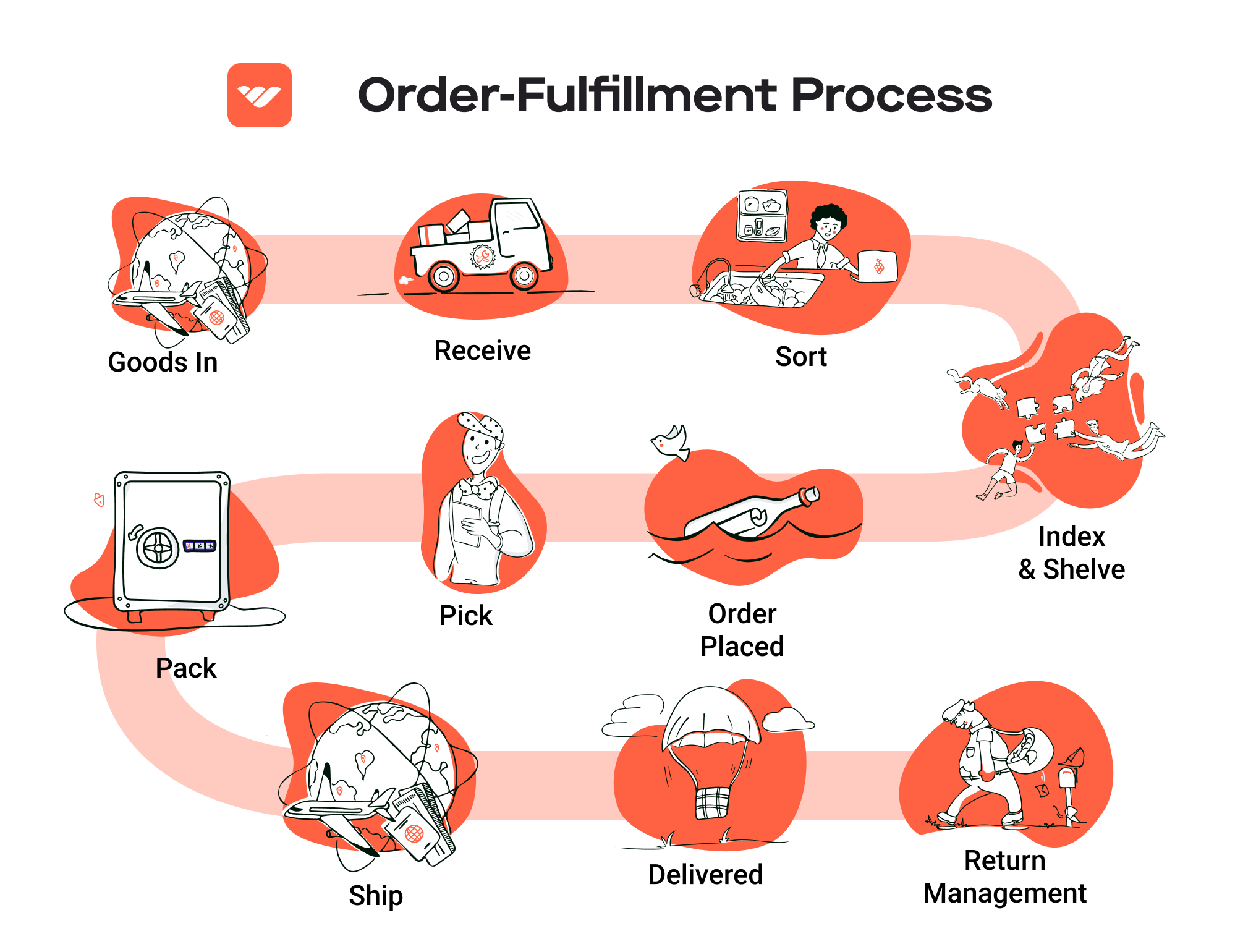
-
Customer Trust: Amazon’s reputation for reliable shipping and customer service extends to FBA sellers. Customers often feel more secure purchasing from sellers using FBA due to the backing of Amazon’s policies and protections.
-
Multi-Channel Fulfillment: FBA can be used to fulfill orders from other sales channels, not just Amazon. This allows sellers to streamline their operations and manage inventory more efficiently across multiple platforms.
-
Scalability: FBA enables sellers to scale their business without the need for significant investment in warehousing and logistics. Sellers can focus on marketing and product development while Amazon handles fulfillment.
-
Time-Saving: By outsourcing fulfillment to Amazon, sellers can save time that would otherwise be spent on packing, shipping, and handling customer service, allowing them to focus on growing their business.
Cons of FBA
-
High Fees: FBA comes with various fees, including storage fees and fulfillment fees. These can add up quickly, especially for sellers with large inventories or slow-moving products, eating into profit margins.
-
Strict Inventory Rules: Amazon has strict guidelines regarding inventory management, including labeling, packaging, and expiration dates for certain products. Sellers must adhere to these rules to avoid penalties and ensure smooth operations.
-
Commingling Risks: FBA uses a commingled inventory system, where products from different sellers are stored together. This can lead to issues if a customer returns a product that does not belong to the original seller, potentially causing confusion and loss of trust.
-
Limited Control: Sellers have limited control over the fulfillment process once their inventory is with Amazon. This can be concerning if there are issues with shipping times or stock levels, as sellers rely on Amazon’s systems.
-
Dependence on Amazon: Businesses become reliant on Amazon’s platform and policies. Changes in Amazon’s terms or algorithms can significantly impact sales and visibility, posing a risk for sellers.
Who is FBA Best For?
FBA is ideally suited for:
-
Small to Medium-Sized Businesses: Companies looking to scale without investing heavily in logistics can benefit from FBA’s comprehensive services.
-
Brands with High Sales Volume: Sellers with high sales volume or seasonal products can take advantage of Amazon’s fulfillment network to handle peak demand efficiently.
-
Sellers Focused on Customer Experience: Businesses that prioritize customer satisfaction and trust may find FBA beneficial, as it enhances the shopping experience with reliable shipping and returns.
-
Multi-Channel Sellers: Brands that sell across various platforms and want to streamline their fulfillment process can leverage FBA to fulfill orders from multiple channels seamlessly.
-
New Sellers: Entrepreneurs entering the e-commerce space can use FBA to simplify logistics and focus on product sourcing and marketing, rather than getting bogged down in fulfillment challenges.
In conclusion, while FBA offers significant advantages such as access to Prime customers and simplified logistics, it also poses challenges like high fees and inventory management rules. Understanding both sides is crucial for e-commerce business owners to make informed decisions about their fulfillment strategy.
Core Services Offered by Fulfillment Centers
Inventory Management & Warehousing
Effective inventory management is crucial for e-commerce businesses aiming to scale. Fulfillment centers offer comprehensive inventory management and warehousing solutions that ensure products are stored, tracked, and managed efficiently. This service typically involves the use of advanced software systems that enable real-time inventory tracking, order forecasting, and stock level monitoring.
Benefits:
-
Accuracy and Efficiency: Fulfillment centers utilize automated systems to track inventory levels, significantly reducing human error associated with manual tracking. This leads to accurate stock counts, which is essential for avoiding stockouts or overstock situations.
-
Space Optimization: E-commerce businesses can save on real estate costs by outsourcing warehousing to fulfillment centers. These centers are designed to maximize storage capacity, ensuring that products are stored in an organized manner, which facilitates quicker retrieval.
-
Scalability: As your business grows, so too can your inventory needs. Fulfillment centers allow for flexible warehousing solutions, accommodating seasonal fluctuations in demand without requiring significant investment in additional space.
Pick and Pack Services
Pick and pack services are fundamental to the fulfillment process, where products are selected (picked) from the warehouse and packed for shipment. This service streamlines order processing, ensuring that products are packaged correctly and shipped out promptly.
Benefits:
-
Speed and Accuracy: Fulfillment centers employ trained staff and sophisticated picking technology to ensure that orders are filled accurately and quickly. This efficiency translates into faster delivery times for customers, enhancing their overall shopping experience.
-
Customization: Many fulfillment centers offer customized packing solutions, allowing businesses to tailor their packaging to reflect their brand. This can include branded boxes, packing slips, and inserts that enhance customer engagement.
-
Reduction of Labor Costs: Outsourcing pick and pack services allows e-commerce businesses to focus on core activities such as marketing and product development, rather than managing labor-intensive packing processes. This not only saves costs but also boosts productivity.
Kitting and Assembly
Kitting and assembly services involve the process of combining multiple products into a single package or kit, ready for sale. This service is particularly beneficial for businesses offering product bundles, promotional items, or subscription boxes.
Benefits:
-
Enhanced Product Offerings: By offering bundled products, e-commerce businesses can increase average order value and provide customers with a more comprehensive shopping experience. Fulfillment centers can efficiently assemble these kits, ensuring consistency in presentation.
-
Time Savings: Kitting can be a labor-intensive process. Utilizing fulfillment centers for this service frees up internal resources, allowing businesses to focus on other critical areas such as customer service and product innovation.
-
Inventory Management: Kitting helps in managing inventory more effectively by combining products that are often purchased together. This not only simplifies inventory tracking but also minimizes the chances of stockouts for individual items.
Returns Management (Reverse Logistics)
Returns management is an essential aspect of the e-commerce fulfillment process, often referred to as reverse logistics. Fulfillment centers provide streamlined returns processing, which is critical for maintaining customer satisfaction and loyalty.
Benefits:
-
Simplified Returns Process: Fulfillment centers handle the entire returns process, from providing return shipping labels to inspecting and restocking returned items. This simplifies the process for customers, making them more likely to shop again.
-
Data Insights: By managing returns effectively, fulfillment centers can provide valuable data insights into customer behavior, such as common reasons for returns. This information can guide product improvements and marketing strategies.
-
Cost Efficiency: Efficient returns management can reduce the costs associated with reverse logistics. Fulfillment centers can consolidate returns, minimizing shipping costs and streamlining the restocking process, ultimately saving money for the business.
In summary, leveraging the core services offered by fulfillment centers enables e-commerce businesses to optimize their operations, reduce costs, and enhance customer satisfaction. By outsourcing inventory management, pick and pack services, kitting, and returns management, businesses can focus on growth and innovation while ensuring a seamless fulfillment experience for their customers.
How to Choose a Fulfillment Partner: A 6-Point Checklist
Location & Warehouse Network
Importance:
The location of your fulfillment partner’s warehouses is crucial for minimizing shipping costs and delivery times. A strategically placed warehouse network allows for faster shipping to your customer base, which can significantly enhance customer satisfaction and reduce cart abandonment rates.
Questions to Ask:
– Where are your warehouses located, and how do they align with my primary customer demographics?
– What is your average shipping time to major regions?
– Do you have plans to expand your warehouse locations in the near future?
Technology & Integrations
Importance:
In today’s e-commerce landscape, technology plays a pivotal role in streamlining operations. A fulfillment partner that offers advanced technology and seamless integrations with your existing systems (like your e-commerce platform, inventory management, and accounting software) can save you time and reduce errors.
Questions to Ask:
– What technology do you use to manage orders and inventory?
– Can your system integrate with my current e-commerce platform? If so, which platforms are supported?
– How do you ensure data security and compliance with regulations such as GDPR?
Specializations (e.g., cold storage, oversized items)
Importance:
Depending on your product range, you may need a fulfillment partner that specializes in certain types of storage or handling. For example, if you sell perishable goods, cold storage capabilities are essential. Similarly, if your products are oversized or fragile, you’ll want a partner experienced in handling such items.
Questions to Ask:
– What types of products do you specialize in fulfilling?
– Do you have specific facilities for handling temperature-sensitive items?
– How do you manage the storage and handling of oversized or delicate products?
Scalability & Capacity
Importance:
As your business grows, your fulfillment needs will change. Partnering with a fulfillment provider that can scale with you is essential to avoid disruptions during peak seasons or growth phases. Assessing their capacity to handle fluctuations in demand will ensure you can meet customer expectations without compromising service quality.
Questions to Ask:
– What is your current capacity, and how do you manage peak season demand?
– Can you accommodate sudden increases in order volume? If so, how?
– What are your plans for capacity expansion in the next few years?
Pricing and Contracts
Importance:
Understanding the pricing structure and contract terms of potential fulfillment partners is crucial for budgeting and ensuring long-term profitability. Look for transparency in pricing to avoid hidden fees that could erode your margins.
Questions to Ask:
– Can you provide a detailed breakdown of your pricing model (fulfillment fees, storage fees, shipping costs)?
– Are there any additional fees I should be aware of (e.g., setup fees, seasonal fees, returns processing)?
– What are the terms of the contract, and is there flexibility if my needs change?
Customer Support & Reviews
Importance:
Reliable customer support is vital for resolving issues quickly and maintaining operational efficiency. Additionally, reviews and testimonials from other clients can provide insight into the fulfillment partner’s reliability and service quality.
Questions to Ask:
– What customer support options do you offer (e.g., phone, email, chat)?
– How quickly can I expect a response to inquiries or issues?
– Can you provide references or case studies from clients in my industry?
Conclusion
Choosing the right fulfillment partner is a critical decision that can significantly impact your e-commerce business’s success. By using this checklist, you can systematically evaluate potential partners based on their location, technology capabilities, specializations, scalability, pricing, and customer support. Taking the time to ask the right questions will help ensure you select a fulfillment partner that aligns with your business goals and can adapt as your needs evolve.
Understanding Fulfillment Pricing: A Breakdown of Common Fees
Initial Setup Fees
When partnering with a fulfillment center, the initial setup fees are typically the first cost you encounter. These fees cover the onboarding process, which may include account setup, system integration, and training. The specifics can vary widely depending on the fulfillment provider, but you can expect to pay a one-time fee ranging from a few hundred to several thousand dollars.
The calculation of setup fees often considers the complexity of your operations. For instance, if your business requires custom software integration or has unique inventory management needs, expect higher fees. Some providers may waive this fee for businesses that commit to long-term contracts, so it’s worth negotiating during the onboarding process.
Receiving Fees
Receiving fees are charged when inventory is delivered to the fulfillment center. This fee covers the labor and resources needed to unload, inspect, and store your products. Fees are typically calculated on a per-unit or per-pallet basis, depending on how your products are packaged and shipped.
For example, you might see rates like $0.50 to $2.00 per unit or $20 to $50 per pallet. It’s essential to clarify whether the receiving fee includes quality checks or if those will incur additional charges. Understanding how your inventory will be received can help you manage costs effectively, especially if you’re dealing with large shipments.
Storage Fees (per pallet/bin)
Storage fees are ongoing costs incurred for keeping your inventory in the fulfillment center. These fees are generally calculated on a per-pallet or per-bin basis, often charged monthly. Rates can vary based on the size and location of your inventory, but a common range is $10 to $30 per pallet per month.
It’s crucial to monitor your inventory turnover rates, as higher storage fees can eat into your margins. Some fulfillment centers may also implement tiered pricing, where the cost per pallet decreases as you store more inventory. If you anticipate fluctuating inventory levels, consider negotiating flexible storage terms that allow for adjustments based on demand.
Pick & Pack Fees (per item/order)
Pick and pack fees are incurred each time an order is processed. This fee covers the labor involved in retrieving items from storage, packing them, and preparing them for shipment. Typically, this fee is charged on a per-item or per-order basis, with rates ranging from $1.00 to $3.00 per item or $2.00 to $5.00 per order.
The complexity of your products can influence these fees. For instance, if you sell items that require special packing (like fragile items), the fulfillment center may charge higher fees due to the additional care required. To optimize costs, streamline your product offerings and packaging requirements, making it easier for the fulfillment center to process orders.
Shipping Fees
Shipping fees are perhaps the most variable component of fulfillment pricing and can significantly impact your overall logistics costs. These fees include the costs of transporting packages from the fulfillment center to your customers and can vary based on the shipping method, distance, weight, and dimensions of the package.
Fulfillment centers typically offer various shipping options, such as standard, expedited, or international shipping, each with different pricing structures. It’s essential to understand the provider’s relationships with shipping carriers, as bulk shipping discounts can lead to lower rates. Make sure to clarify whether the shipping fee includes tracking and insurance, as these can add to your costs.
Tips for Getting an Accurate Quote
-
Understand Your Needs: Before reaching out to fulfillment centers, clearly outline your business needs, including expected order volume, product types, and special requirements.
-
Request Detailed Quotes: Ask potential providers for itemized quotes that break down all fees associated with their services. This transparency will help you compare offers accurately.
-
Negotiate Terms: Don’t hesitate to negotiate pricing and terms, especially if you plan to commit to long-term contracts or have a high volume of orders. Many fulfillment centers are willing to work with you to create a mutually beneficial agreement.
-
Consider Additional Services: If you require additional services such as kitting, returns processing, or custom packaging, make sure to ask about these upfront, as they can significantly affect pricing.
-
Evaluate Performance Metrics: Look beyond pricing to evaluate the provider’s performance metrics, such as order accuracy and shipping speed, which can impact your customer satisfaction and overall success.
By carefully evaluating these factors, you can choose a fulfillment partner that aligns with your business goals while ensuring a competitive pricing structure.
Frequently Asked Questions (FAQs) about Fulfillment
1. What is “Playtime: Fulfillment” about?
“Playtime: Fulfillment” is an animated episode from the Prime Video series “Secret Level.” It follows a young delivery courier named O who embarks on an adventurous journey after being entrusted with a mysterious package. The narrative blends elements of gaming with real-world logistics, highlighting the excitement and challenges of package delivery in a fantastical setting.
2. How does the fulfillment process work in e-commerce?
The fulfillment process in e-commerce involves several key steps: receiving inventory, storing products in a warehouse or fulfillment center, processing orders, picking and packing items, and finally shipping them to customers. This streamlined process ensures that orders are fulfilled accurately and efficiently, enhancing customer satisfaction.
3. What’s the difference between a warehouse and a fulfillment center?
A warehouse is primarily a storage facility for goods, focusing on inventory management. In contrast, a fulfillment center is designed specifically for order processing and shipping. Fulfillment centers often include advanced technology for order tracking and management, ensuring quicker turnaround times for e-commerce orders.
4. What is a Third-Party Logistics Provider (3PL)?
A Third-Party Logistics Provider (3PL) is a service that allows businesses to outsource their logistics and fulfillment operations. This can include warehousing, inventory management, order fulfillment, and shipping. Utilizing a 3PL can help businesses scale by reducing overhead costs and improving efficiency.
5. How much do fulfillment services cost?
The cost of fulfillment services can vary widely based on several factors, including the volume of orders, storage space needed, packaging requirements, and shipping destinations. Typically, fulfillment services charge per order, storage fees, and shipping costs, which can range from a few dollars to several hundred dollars monthly, depending on the scale of operations.
6. What are the benefits of using a fulfillment service?
Using a fulfillment service can significantly enhance operational efficiency. Benefits include reduced overhead costs, access to advanced technology for order management, faster shipping times, and the ability to scale operations without the need for extensive infrastructure. This allows businesses to focus more on core activities like marketing and product development.
7. How can I choose the right fulfillment partner?
Choosing the right fulfillment partner involves assessing several factors: the provider’s reputation, technology capabilities, scalability, geographic reach, and pricing structure. It’s also essential to consider their customer service and support, as a responsive partner can greatly enhance your operational efficiency.
8. What role does technology play in fulfillment?
Technology plays a crucial role in modern fulfillment processes. Inventory management systems, order tracking software, and automated picking systems enhance accuracy and speed. Additionally, data analytics can provide insights into order trends and customer preferences, helping businesses optimize their fulfillment strategies.
9. How can I improve my order fulfillment speed?
To improve order fulfillment speed, consider implementing automation technologies, optimizing inventory management, and streamlining your picking and packing processes. Training staff on best practices and regularly reviewing fulfillment performance can also help identify bottlenecks and areas for improvement.
10. What are common challenges in order fulfillment?
Common challenges in order fulfillment include inventory management issues, order inaccuracies, shipping delays, and scaling operations during peak seasons. Addressing these challenges requires a combination of effective planning, technology adoption, and maintaining strong relationships with logistics partners. Regularly analyzing fulfillment performance can also help mitigate these issues.
Conclusion: Is Outsourcing Fulfillment the Right Move for Your Business?
Evaluating the Benefits of Outsourcing Fulfillment
Outsourcing fulfillment can be a transformative strategy for e-commerce businesses aiming to scale efficiently. One of the most significant advantages is the time savings it offers. By delegating the complexities of inventory management, order processing, and shipping logistics, business owners can redirect their focus toward core activities such as marketing, customer engagement, and product development. This not only enhances productivity but also allows for more strategic planning and innovation.
Additionally, partnering with a fulfillment service provides scalability that in-house operations may struggle to achieve. As your sales grow, a fulfillment partner can easily adjust to fluctuating demand, ensuring that your business can meet customer expectations without the burden of investing in additional infrastructure or manpower. This flexibility is crucial in a dynamic market where consumer preferences can shift rapidly.
Moreover, these services bring expertise to the table. Fulfillment partners often have advanced technologies and established processes that ensure efficient operations, reducing the likelihood of errors and improving overall customer satisfaction. Their experience in logistics can also lead to cost savings through optimized shipping rates and inventory management strategies.
However, the key to reaping these benefits lies in selecting the right fulfillment partner. A thorough evaluation of potential partners is essential to ensure they align with your business goals and operational needs.
Strategic Call to Action
As you contemplate the future of your e-commerce operations, consider conducting a comprehensive audit of your current shipping and fulfillment processes. Identify pain points, inefficiencies, and areas for improvement. This exercise will help you determine whether outsourcing fulfillment is the right strategic move for your business. By taking this proactive step, you can position your brand for growth and success in an increasingly competitive landscape.
Important Disclaimer
⚠️ Important Disclaimer
The information in this guide is for educational purposes. Fulfillment services, pricing, and platform features change frequently. Always conduct your own due diligence and consult with providers directly before making business decisions.
